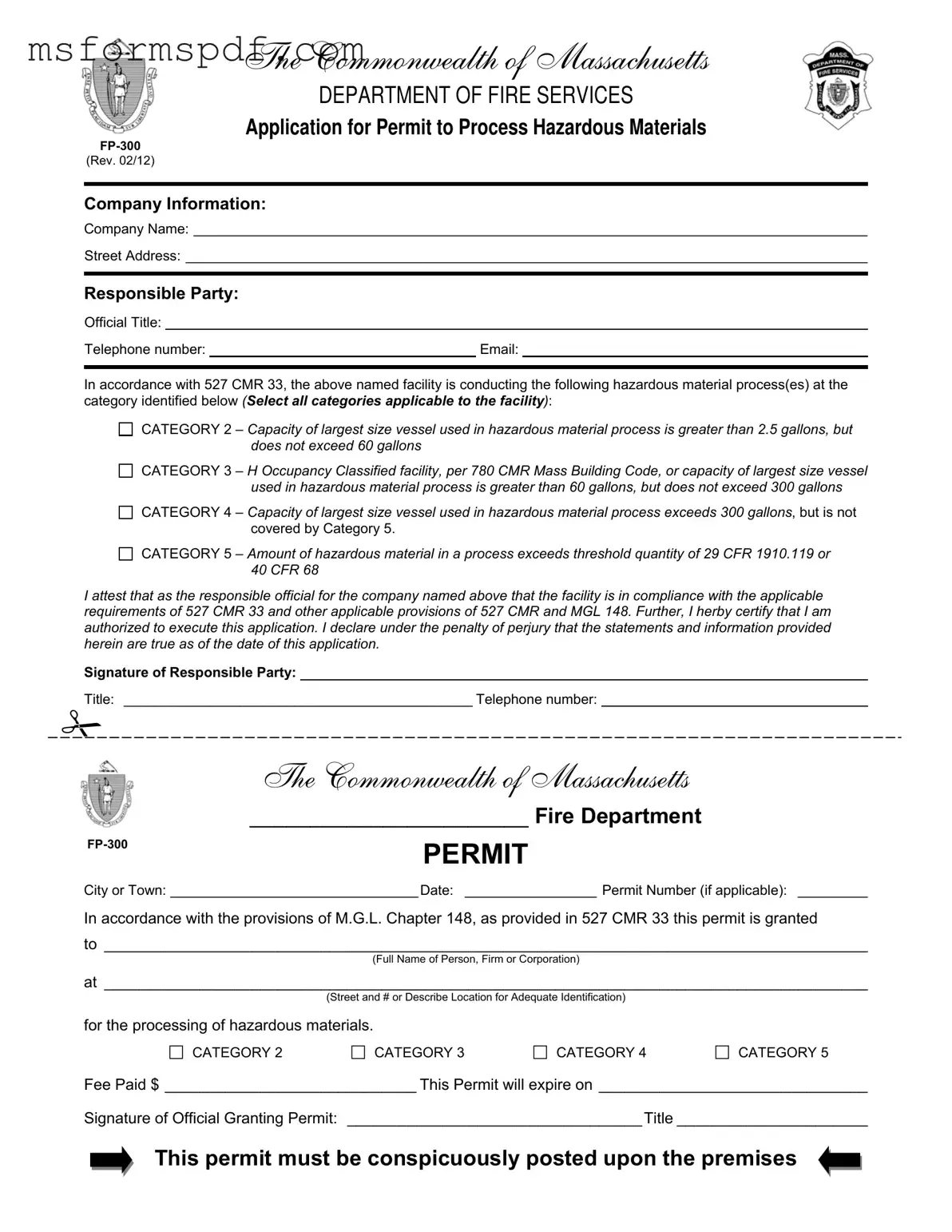Free Fp 300 Massachusetts Template in PDF
The FP-300 Massachusetts form is an essential document used to apply for a permit to process hazardous materials in the Commonwealth of Massachusetts. This application ensures that facilities comply with safety regulations, specifically under 527 CMR 33. By filling out the FP-300, companies can clearly outline their hazardous material processes and demonstrate their commitment to safety and compliance.
Launch Editor Now
